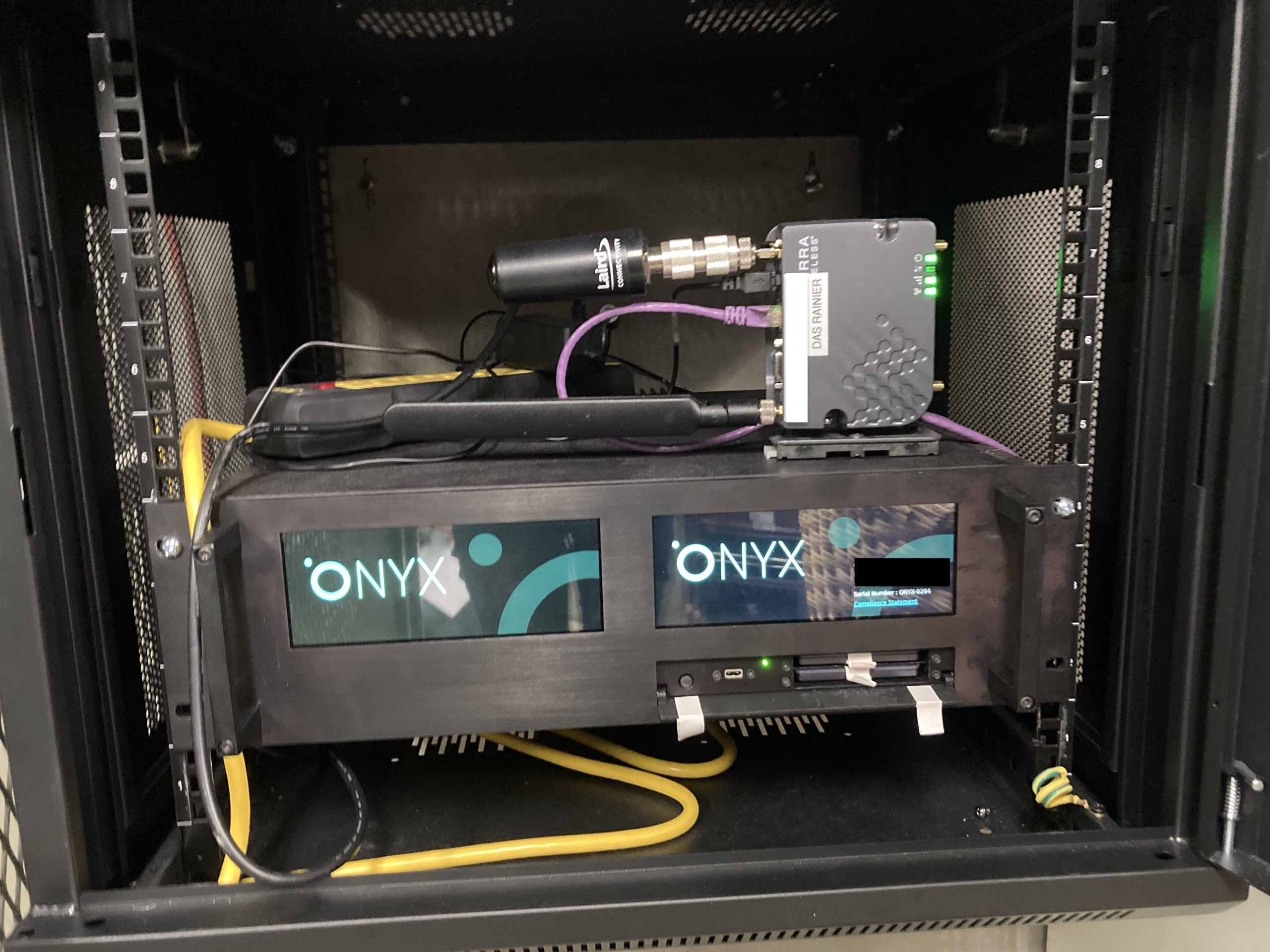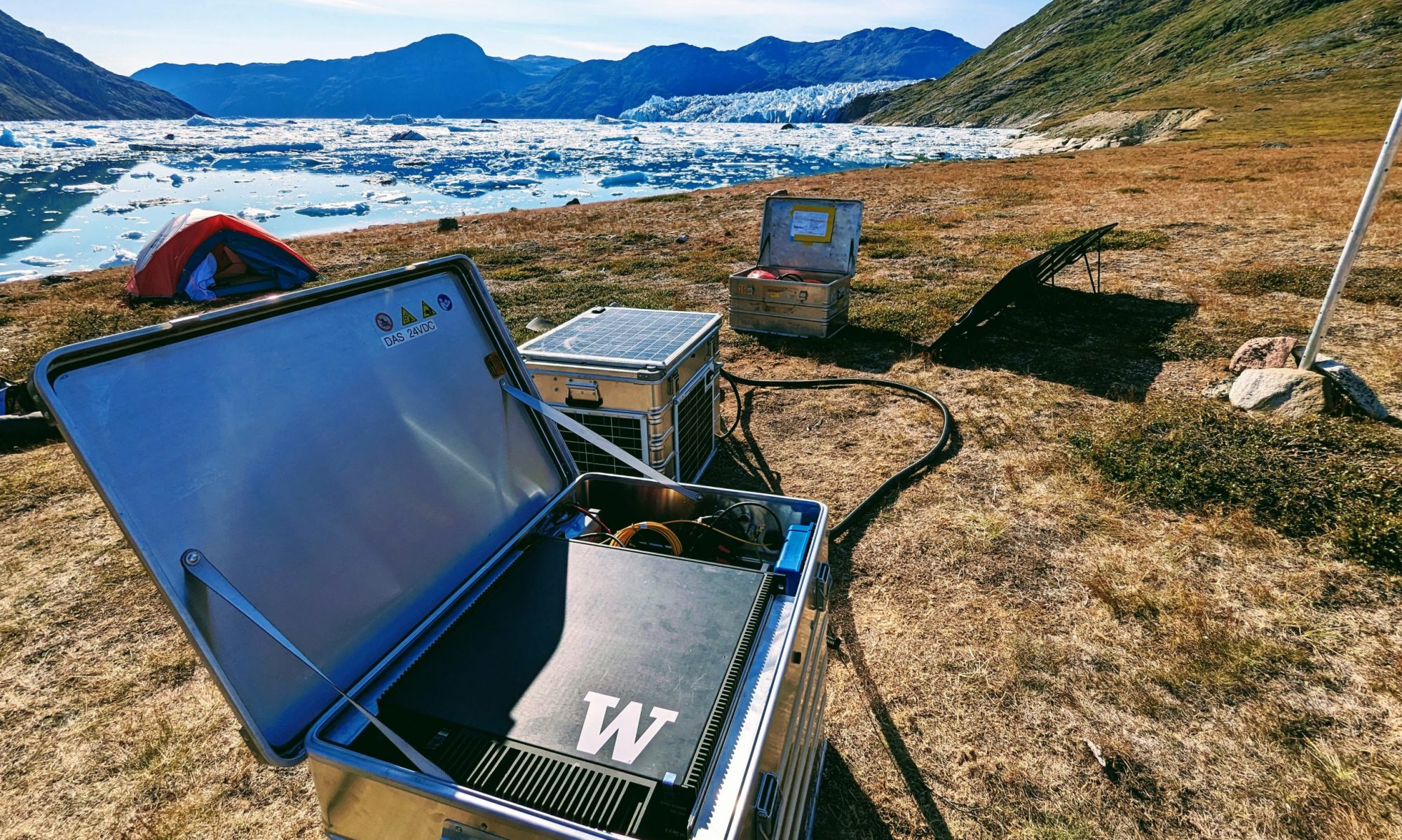DAS Monitoring at Mt. Rainier National Park
Subject: Terrestrial Seismic Monitoring
Resource Type: Dataset
• Collected: 2023-08-23 to 2024-09-18
• Creators: Manuela Köpfli and Verónica A Gaete-Elgueta
• Contact: Brad Lipovsky
• Publisher: UW FiberLab
• Publication Year: 2024
About
The MORA-DAS experiment utilized Distributed Acoustic Sensing (DAS) on an unused telecommunications fiber (dark fiber) at Mount Rainier National Park. The fiber extends mostly buried from Paradise (Henry M. Jackson Visitor Center, 0 km optical distance) to the Nisqually entrance (~32 km), where it transitions to utility poles along the road to Ashford (~43 km optical distance).
The DAS interrogator was installed in a server rack in the Visitor Center basement, connected to a PNSN cellphone modem for remote access. This allowed adjustments to recording parameters, system monitoring, and recording drive switching but did not support edge computation. Due to the basement location, a GPS antenna could not be attached, and firewall restrictions prevented GPS time synchronization, leading to time drift of several seconds.
Fiber Location & Installation Details
The buried section of the fiber is likely enclosed in a PVC conduit at a depth of 0.5 to 1 meter, though this varies depending on bedrock conditions. It runs across the Nisqually Glacier Bridge (~10 km optical distance) and, in some locations, is within a few meters of the Nisqually River.
Since the exact fiber route was not provided by the telecommunications company, the approximate channel locations were determined using a GPS-tracked vehicle drive along the road. The DAS signal was manually correlated with the vehicle’s position under the assumption that the fiber is buried beneath the pavement. The channel location uncertainty is estimated to be within a few channels. The portion of the fiber suspended from utility poles beyond the Nisqually entrance was not precisely located.
Paradise Visitor Center, Mt. Rainier National Park, Washington (46.78°N, -121.73°W)
Dataset Description
Sampling Rate & Data Storage
The experiment ran from August 23, 2023, to September 18, 2024, with the goal of continuously recording 200 Hz DAS data. However, storage limitations at the beginning of the experiment led to small data gaps ranging from a few hours to two days. In December 2023, it was not possible to replace nearly full storage drives, so to prevent data loss, the recording rate was temporarily reduced to 20 Hz until storage was available again.
In March 2024, a Network Attached Storage (NAS) system (~88TB) was introduced to archive the data from full 8TB SSDs. However, data was not recorded directly to the NAS. At the same time, the experiment began collecting 50 Hz data, allowing for more efficient remote access and faster processing. To create a complete 50 Hz dataset, earlier 200 Hz recordings were downsampled to 50 Hz, except for the period in December 2023, where only 20 Hz data is available. The 50 Hz sampling rate was chosen to ensure that the recorded data captures frequencies above the Nyquist limit for surface events.
DAS
| Instrument | Sintela ONYXTM v1.0 |
| Sampling Rates | 200 Hz, 50 Hz* |
| Channel Spacing | 9.57m |
| Gauge Length | 9.57m |
| Number of Channels | 4494 |
Link to DOI:
Citation:
License: Creative Commons Attribution-NonCommercial-ShareAlike 4.0 International

